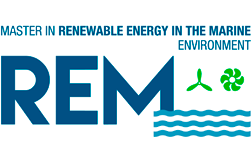Scholar Activities Intake 2018-2020
Attendace to the conferences is open to the academic community and REM associate partners. They will take place in the Faculty of Engineering of Bilbao, Building II, Room “Sala de juntas”.
Download the complete Program for 2019 HERE
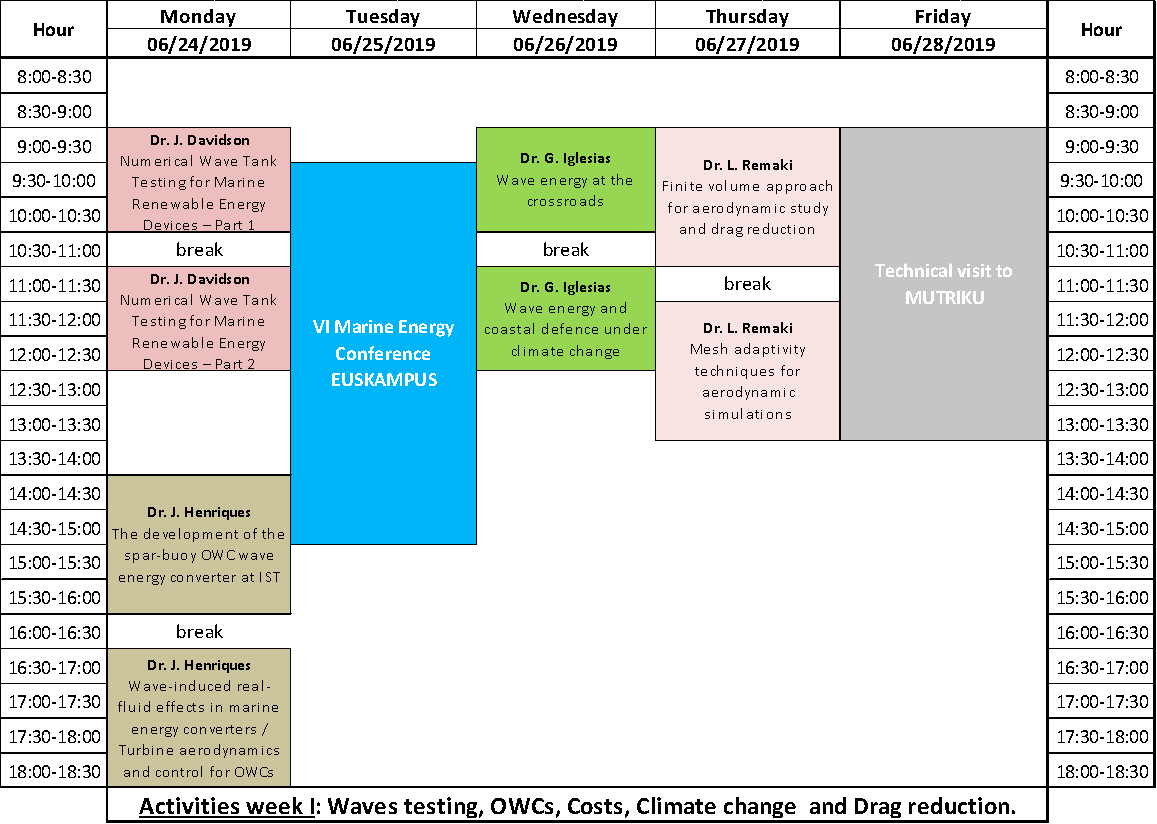
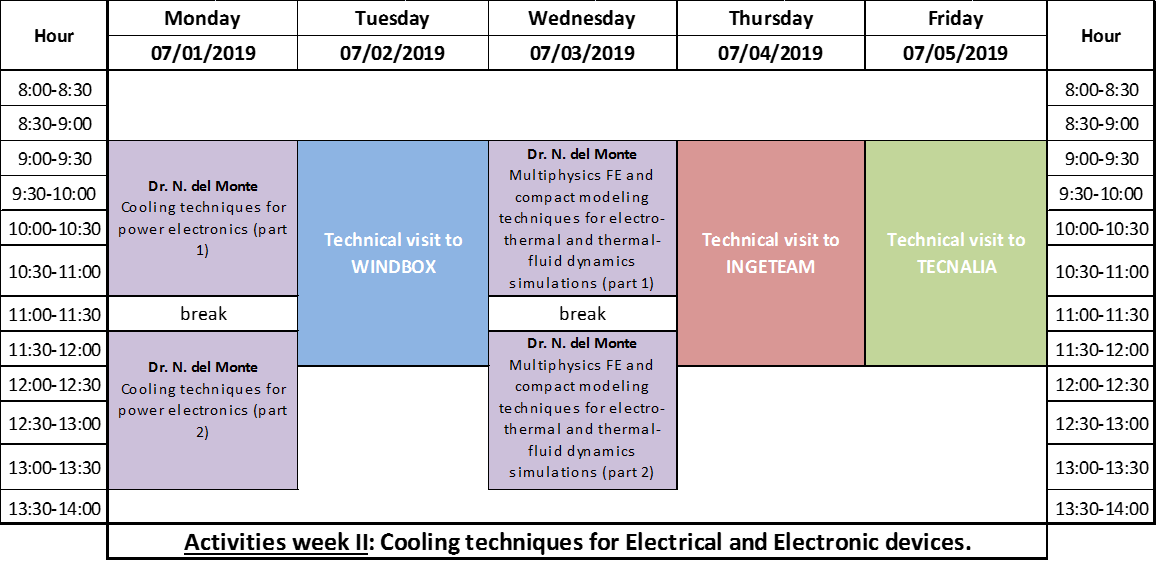
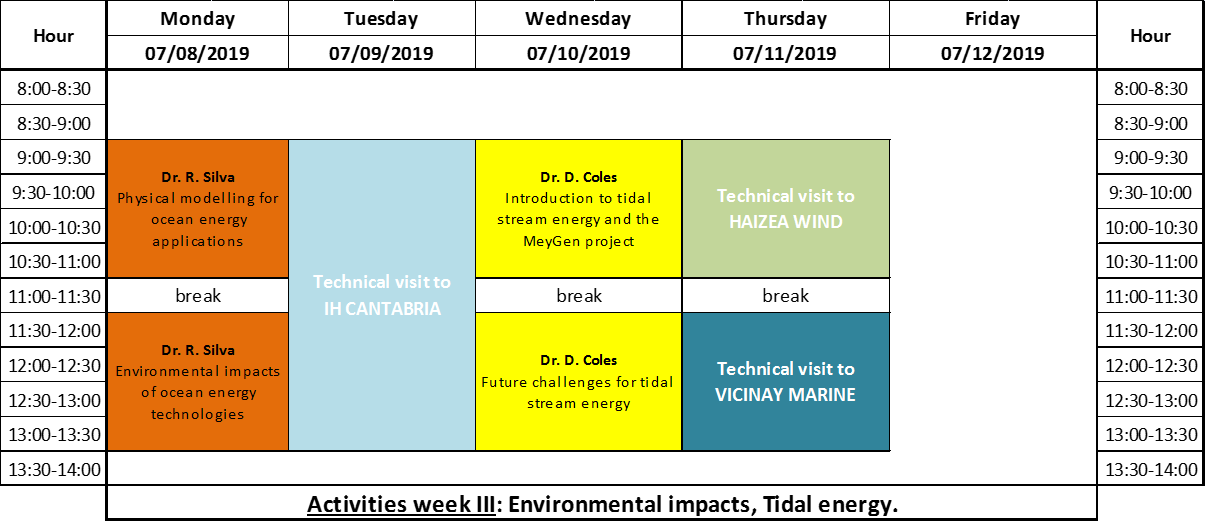
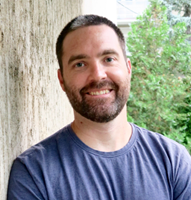 Dr Josh Davidson is from Townsville, Australia, where he studied at James Cook University, earning a First Class Honours degree and a PhD in the School of Engineering and Physical Sciences. He served as the Deputy Director at the Centre for Ocean Energy Research (COER), Maynooth University, Ireland, working on nonlinear hydrodynamic modelling and control of wave energy converters and the development of Computation Fluid Dynamics based Numerical Wave Tanks. He was the Committee Chair for the International Network on Offshore Renewable Energy (INORE). He is currently a Research Fellow at the Dept of Fluid Mechanics at Budapest University of Technology and Economics supported by an EU grant for the project Nonlinear Rock and Roll – Modelling and Control of Parametric Resonance in Wave Energy Converters.
Dr Josh Davidson is from Townsville, Australia, where he studied at James Cook University, earning a First Class Honours degree and a PhD in the School of Engineering and Physical Sciences. He served as the Deputy Director at the Centre for Ocean Energy Research (COER), Maynooth University, Ireland, working on nonlinear hydrodynamic modelling and control of wave energy converters and the development of Computation Fluid Dynamics based Numerical Wave Tanks. He was the Committee Chair for the International Network on Offshore Renewable Energy (INORE). He is currently a Research Fellow at the Dept of Fluid Mechanics at Budapest University of Technology and Economics supported by an EU grant for the project Nonlinear Rock and Roll – Modelling and Control of Parametric Resonance in Wave Energy Converters.
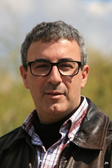 João C. C. Henriques was born in Lisbon, Portugal, in 1969. He received the Diploma in Mechanical Engineering in 1993, the M.Sc. in Mechanical Engineering in 1996, and the Ph.D. in Mechanical Engineering in 2006, all from the Instituto Superior Técnico (IST), Technical University of Lisbon (presently University of Lisbon). From 1993 to 2007, his main research topic was the development of numerical methods for simulating high-speed compressible flow. Since 2008, his main areas of research are the numerical and experimental modelling of wave energy converters (WECs), control of the power take-off system of WECs and the aerodynamic design of air turbines for oscillating water column WECs. He published 40 papers in peer-refereed journals. He also holds five patents, four in the field of wave energy and another in wind power. He participated in eight European projects in the area of wave energy. Presently is a Principal Investigator at Instituto de Engenharia Mecânica (IDMEC) and an Assistant Professor at IST.
João C. C. Henriques was born in Lisbon, Portugal, in 1969. He received the Diploma in Mechanical Engineering in 1993, the M.Sc. in Mechanical Engineering in 1996, and the Ph.D. in Mechanical Engineering in 2006, all from the Instituto Superior Técnico (IST), Technical University of Lisbon (presently University of Lisbon). From 1993 to 2007, his main research topic was the development of numerical methods for simulating high-speed compressible flow. Since 2008, his main areas of research are the numerical and experimental modelling of wave energy converters (WECs), control of the power take-off system of WECs and the aerodynamic design of air turbines for oscillating water column WECs. He published 40 papers in peer-refereed journals. He also holds five patents, four in the field of wave energy and another in wind power. He participated in eight European projects in the area of wave energy. Presently is a Principal Investigator at Instituto de Engenharia Mecânica (IDMEC) and an Assistant Professor at IST.
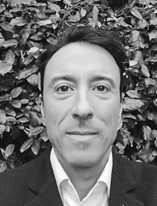 Prof Gregorio Iglesias has over 25 years of experience in wave, offshore wind and tidal energy, including combined wave and wind systems, resource characterisation, impact assessment, and the economics of marine renewable energy systems. He holds a Marie Curie fellowship in wave energy from the European Commission, and has coordinated numerous laboratory tests of marine renewable energy systems. He is a member of the IEC Technical Committee in charge of the standards for wave energy device development (scale-model testing). He regularly acts as a reviewer for a number of international journals and research councils, is a member of various Editorial Boards and the Subject Editor of Energy (Elsevier) for wave, tidal and hydropower. Gregorio Iglesias has published over 100 journal papers and secured over €12M of research income as Principal Investigator. His h-index is 40, and his total number of citations, 4800+.
Prof Gregorio Iglesias has over 25 years of experience in wave, offshore wind and tidal energy, including combined wave and wind systems, resource characterisation, impact assessment, and the economics of marine renewable energy systems. He holds a Marie Curie fellowship in wave energy from the European Commission, and has coordinated numerous laboratory tests of marine renewable energy systems. He is a member of the IEC Technical Committee in charge of the standards for wave energy device development (scale-model testing). He regularly acts as a reviewer for a number of international journals and research councils, is a member of various Editorial Boards and the Subject Editor of Energy (Elsevier) for wave, tidal and hydropower. Gregorio Iglesias has published over 100 journal papers and secured over €12M of research income as Principal Investigator. His h-index is 40, and his total number of citations, 4800+.
 Lakhdar Remaki is an associate professor and department head at Alfaisal University (KSA). He received his PhD degree in applied mathematics from Claude Bernard University of Lyon, France. He has been a BCAM-BALTGAR research professor and CFD group leader at Basque Centre of Applied Mathematics (BCAM). He worked in many world-class institutions including Swansea University (UK), Sherbrooke University (Canada), Ecole Polytechnique of Montreal (CANADA), McGill University (Canada). His research expertise include computational fluid dynamic, PDEs, finite element and finite volume methods, shock detection, aerodynamic, gas-particle interaction, acoustics, mesh generation and adaptivity, signal and image analysis. He made several scientific contributions to the different fields published in over 75 journals and proceedings.
Lakhdar Remaki is an associate professor and department head at Alfaisal University (KSA). He received his PhD degree in applied mathematics from Claude Bernard University of Lyon, France. He has been a BCAM-BALTGAR research professor and CFD group leader at Basque Centre of Applied Mathematics (BCAM). He worked in many world-class institutions including Swansea University (UK), Sherbrooke University (Canada), Ecole Polytechnique of Montreal (CANADA), McGill University (Canada). His research expertise include computational fluid dynamic, PDEs, finite element and finite volume methods, shock detection, aerodynamic, gas-particle interaction, acoustics, mesh generation and adaptivity, signal and image analysis. He made several scientific contributions to the different fields published in over 75 journals and proceedings.
 Nicola Delmonte was born in Manfredonia, Italy, in 1967. He received the Laurea degree in electronic engineering and the Ph.D. degree in information technology from the University of Parma (Italy), in 2002 and 2006, respectively. Since 2002, he has been with the Department of Engineering and Architecture (formerly Information Engineering), University of Parma, where he became Research Fellow in 2005, Assistant Professor in 2013, and Associate Professor in 2018. His research activities have covered the study of breakdown phenomena and high-field accelerated stress of pHEMTs, the technological processing for RF test structures on thin ceramic films, the electrical and thermal characterization, modeling, and reliability evaluation of power devices and hybrid modules, the design of renewable-energy plants, nanogrids, and smart systems. He was the 2nd place winner of the International Competition of Ideas entitled “Renewable energy for the smaller islands and marine protected areas” – Issue 2011, promoted by the Environmental Association Marevivo, and the Italian Ministry of Environment and Protection of Territory and Sea. Nicola Delmonte is IEEE member since 2015, and reviewer for some international journal as Microelectronics Reliability, Measurement, and Applied Thermal Engineering.
Nicola Delmonte was born in Manfredonia, Italy, in 1967. He received the Laurea degree in electronic engineering and the Ph.D. degree in information technology from the University of Parma (Italy), in 2002 and 2006, respectively. Since 2002, he has been with the Department of Engineering and Architecture (formerly Information Engineering), University of Parma, where he became Research Fellow in 2005, Assistant Professor in 2013, and Associate Professor in 2018. His research activities have covered the study of breakdown phenomena and high-field accelerated stress of pHEMTs, the technological processing for RF test structures on thin ceramic films, the electrical and thermal characterization, modeling, and reliability evaluation of power devices and hybrid modules, the design of renewable-energy plants, nanogrids, and smart systems. He was the 2nd place winner of the International Competition of Ideas entitled “Renewable energy for the smaller islands and marine protected areas” – Issue 2011, promoted by the Environmental Association Marevivo, and the Italian Ministry of Environment and Protection of Territory and Sea. Nicola Delmonte is IEEE member since 2015, and reviewer for some international journal as Microelectronics Reliability, Measurement, and Applied Thermal Engineering.
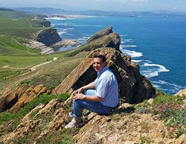 Rodolfo Silva studied Civil Engineering at the National University of México, an M.Sc. in Business Administration at the University of Chapultepec and an M.Sc. in Coastal and Oceanographic Engineering and a Ph.D.in Coastal and Port Engineering at the University of Cantabria. From 1986 to 1995 he worked as a civil engineer in several companies and since then has been a researcher at UNAM, in the Hydraulics Coordination of the Institute of Engineering. Prof. Silva is the leader of the UNAM Coastal and Port Engineering Group; Regional Coordinator for Latin America in the Excellence Center for Development Cooperation – Sustainable Water Management (EXCEED) funded by the DAAD of the German Government, and Head of the Mexican Center for Innovation in Ocean Energy, which involves over 40 institutions and 500 researchers and students from multiple disciplines. Rodolfo has more than 100 publications in refereed journals and over 400 publications as author or co author of books, book chapters, extensive reports and technical standards. He has participated in more than 120 research projects funded by various national and international institutions, both public and private. Dr. Silva has been the supervisor of 95 undergraduate and graduate theses. He has received several distinctions, among them the 2006 National Hydraulic Prize “Enzo Levi” (Mexican Association of Hydraulic Engineering), the 2005 National University Distinction for Academic Youth (UNAM) and the National Award “Diario de México” to the best student in 1990 (Mexican Athenaeum).
Rodolfo Silva studied Civil Engineering at the National University of México, an M.Sc. in Business Administration at the University of Chapultepec and an M.Sc. in Coastal and Oceanographic Engineering and a Ph.D.in Coastal and Port Engineering at the University of Cantabria. From 1986 to 1995 he worked as a civil engineer in several companies and since then has been a researcher at UNAM, in the Hydraulics Coordination of the Institute of Engineering. Prof. Silva is the leader of the UNAM Coastal and Port Engineering Group; Regional Coordinator for Latin America in the Excellence Center for Development Cooperation – Sustainable Water Management (EXCEED) funded by the DAAD of the German Government, and Head of the Mexican Center for Innovation in Ocean Energy, which involves over 40 institutions and 500 researchers and students from multiple disciplines. Rodolfo has more than 100 publications in refereed journals and over 400 publications as author or co author of books, book chapters, extensive reports and technical standards. He has participated in more than 120 research projects funded by various national and international institutions, both public and private. Dr. Silva has been the supervisor of 95 undergraduate and graduate theses. He has received several distinctions, among them the 2006 National Hydraulic Prize “Enzo Levi” (Mexican Association of Hydraulic Engineering), the 2005 National University Distinction for Academic Youth (UNAM) and the National Award “Diario de México” to the best student in 1990 (Mexican Athenaeum).
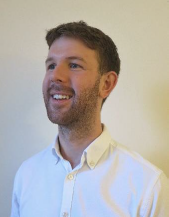 Daniel Coles is the Resource Analyst at SIMEC Atlantis Energy. Since joining in July 2017, Daniel has taken the lead role in activities such as the power curve testing of the Meygen Phase 1A turbines, resource assessment, array and cost of energy optimisation, energy storage modelling and environmental impact assessment. He has disseminated his work at multiple leading international conferences and contributes to the relevant International Electrotechnical Commission standards for tidal stream energy. He holds a Master’s degree in Mechanical Engineering from the University of Manchester and a PhD in tidal turbine array modelling from the University of Southampton, where he is an Adjunct Fellow. Before joining SIMEC Atlantis Energy, Daniel held a Postdoctoral Research Associate post at Imperial College London, where he collaborated with industry to implement turbine micro-siting optimisation methods to reduce the cost of commercial scale tidal stream turbine array energy.
Daniel Coles is the Resource Analyst at SIMEC Atlantis Energy. Since joining in July 2017, Daniel has taken the lead role in activities such as the power curve testing of the Meygen Phase 1A turbines, resource assessment, array and cost of energy optimisation, energy storage modelling and environmental impact assessment. He has disseminated his work at multiple leading international conferences and contributes to the relevant International Electrotechnical Commission standards for tidal stream energy. He holds a Master’s degree in Mechanical Engineering from the University of Manchester and a PhD in tidal turbine array modelling from the University of Southampton, where he is an Adjunct Fellow. Before joining SIMEC Atlantis Energy, Daniel held a Postdoctoral Research Associate post at Imperial College London, where he collaborated with industry to implement turbine micro-siting optimisation methods to reduce the cost of commercial scale tidal stream turbine array energy.
Dr. J. Davidson
The first half of this lecture will discuss the role of numerical wave tanks (NWTs) in marine renewable energy (MRE) device development, covering topics such as:
- The TRL-TPL matrix and the optimal development trajectory of MRE devices
- Economics of computational modelling
- Current state of the art
- Limitations of computational modelling
The second half will then cover the hydrodynamic modelling methods available for implementing the NWT, presenting topics such as:
- Solving the Navier-Stokes equations – Computational cost vs fidelity trade-offs
- Potential flow – Linear, partially nonlinear, weakly nonlinear and fully nonlinear approaches
- CFD – DNS, LES, RANS and Euler Equations
- SPH and Lattice Boltzmann methods
- Domain decomposition to incorporate far-field and array effects
- Wave and current generation/absorption
Available software and toolboxes
Modelling and implementation of the various MRE subsystems, such as Mooring, PTO and Control systems, is the focus of the first half of this lecture, detailing topics such as:
- Mathematical modelling of mooring systems and selecting the appropriate model for the application being investigated
- PTO modelling – High fidelity vs Simplified models
- Implementation and evaluation of control systems
- Coupling several numerical models and solvers in the NWT – Issues and approaches
Finally, the range of NWT experiments which can be exploited for MRE device development are discussed, including:
- Type of experiments and measurements available
- NWT verification and validation
- Evaluation of device performance
System identification of computationally fast reduced order models
Dr. J. Henriques
IST is one of the most active groups in the development of oscillating water column (OWC) wave energy converters (WECs). These WECs are essentially hollow structures forming a water column in the lower part and, above the water free surface, an air chamber open to the atmosphere through a duct where an air turbine is installed. The action of the waves moves the water column and, alternately, compresses and decompresses the entrapped air resulting in a bi-directional flow through an air turbine.
The lecture aims to present the development of the spar-buoy OWC from its inception to the current status. Closely linked to the design of the spar-buoy is the development of a new self-rectifying air turbine, the so-called biradial turbine. The presentation covers the original idea behind the spar-buoy, the preliminary design stages, the numerical modelling and optimisation of the hull shape, and the experimental tests in several wave facilities (NAREC, COAST Lab and IST). The path that led to the invention of the biradial turbine is also described, as well as the one-year real sea test campaign of the turbine performed at the Mutriku wave power plant. Besides, the talk addresses how the intellectual property affected the development process.
The talk addresses two topics related to the development of wave energy converts. The first part of the presentation discusses wave-induced real-fluid effects in marine energy converters. The performance assessment of marine energy converters involves the integrated treatment of their hydrodynamic design and the optimization of their device hulls. Nowadays, such tasks require extensive experimental work and simulation plans, consuming considerable resources and time. In this comprehensive review of integrated approaches to numerical and experimental testing, the advantages and disadvantages of existing tools, from full-scale prototype and wave tank models to Computational Fluid Dynamics (CFD) and potential flow simulations, are all analysed. The second part of the presentation addresses turbine aerodynamics and control of the oscillating water column using the Mutriku wave power plant as a test case. The presentation describes the existent types of air turbines for OWCs, showing the pros and cons of each one. Later, it is analysed the dynamics and control of air turbines and electrical generators in oscillating-water-columns (OWCs). The aim is to explain the performance of an OWC device based on the physical behaviour of each system component.
Dr. G. Iglesias
In this lecture we will look at the current status of wave energy. The existing technologies will be classified according to different criteria, e.g., interaction with the wave field, distance to shore, and power take-off (PTO). The challenge of wave energy is to transform from an active research sector into a fully-fledged industrial sector that contributes significantly to the energy mix in many countries. For this purpose the cost of wave energy must be reduced, which can only be achieved through the development of reliable, performing technologies, and in all probability by exploiting its synergies with other uses of the marine space.
In this lecture we will consider the deployment of wave farms, i.e., arrays of wave energy converters (WECs), with the dual purpose of generating carbon-free electricity and protecting the coast from flooding and erosion. Climate change is set to exacerbate these problems in vulnerable areas worldwide – many of which have a high population density. Wave farms have a number of advantages relative to conventional coastal defence measures (groynes, detached breeakwaters, seawalls, etc.): they adapt naturally to sea level rise, have a far lower visual impact on the coastline, and produce renewable energy. We will cover the recent works on this topic and explore how it can be further developed.
Dr. L. Remaki
The talk will be on dual-mesh finite volume for CFD simulations. Details of the finite volume method applied to Navier-Stokes equations will be provided using the edge-based and node-centered approach. The presentation will include as well Inviscid and viscous fluxes estimation using both Roe scheme and Riemann solvers. First and second order (in space) cases will be presented along with limiters for stability issue. The talk will end on some observations on the Riemann solver.
Note that the talk is for a large public, targeting more specifically engineering background attendance; therefore mathematics proofs will not be provided.
The second talk deals with meshing techniques. The Delaunay triangulation technique for unstructured mesh will be briefly presented. Then mesh adaptivity techniques will be justified and discussed. Two standard strategies will be presented, first the adaptivity through Delaunay matrix modification. This is considered as a global mesh adaptivity strategy. Second, a Hessian-based metric is derived from a first order finite element error estimate (upper-bound) of a selected field variable. The obtained metric is used (rather than the Euclidean metric) to modify an initial and arbitrary mesh in order to get an optimal grid in terms of minimum number of nodes (resolution) with best CFD solution
Dr. N. Delmonte
As design of power electronic converters and new advanced materials or processes become available, the rate of new technologies adoption by the industries accelerates. For this reason, in recent years power converters, thanks to new devices such as those GaN based, and new packaging technologies, are becoming smaller and smaller. Unfortunately, miniaturization leads to high dissipated power densities. This helps to keep always in vogue the cooling problem. That’s why, this lecture will be dedicated to the state of the art of cooling techniques for power electronics.
Starting from standard techniques based on natural and forced convective systems, both with air and fluid, will be presented innovative ultrahigh efficiency cooling systems, such as those based on electrowetting, immersion, and phase change materials.
Together with cooling techniques, will be presented some standard and innovative technologies to produce power modules, designed to improve both electrical and thermal performances.
This lecture will be focused on the numerical modeling of thermal problems in power electronics. Using the Finite Element Method (FEM), it will be shown how to model a heat transfer problem. It will be also coupled to electromagnetic or fluid dynamics physics, to more accurately model the system in the real operating mode. The aim is to show how multiphysics simulations can be used for the cooling system design or used for reliability studies.
Once highlighted the criticalities of this modeling, it will be described how to validate the models for a reliable and accurate Finite Element Analysis (FEA).
Finally, it will be shown how to use the FEA to extract compact thermal simulation models, such as the Foster and Cauer networks. Some techniques to obtain compact models of coupled electro-thermal and thermal-fluid dynamics problems will be presented.
Dr. R. Silva
Numerous laboratory facilities, wave-currents flumes (2D) and tanks (3D), has been used worldwide for testing the performance of different ocean energy devices (e.g. marine turbines and WEC’s). In this lecture, a review of the theoretical background necessary to design geometric and dynamic scaled models of ocean energy extraction prototypes, will be given. Including the limitations of the results of the variables measured during the experiments, as well as those characteristics that are impossible to scale and/or represent in the laboratory. Also, an overview of experiments for ocean energy applications carried out in laboratories around the world will be made, including the Engineering Institute of UNAM, Mexico.
Given current and future scenarios of climate change and the ongoing efforts to reduce greenhouse gas emissions, renewable energies are of growing interest. Ocean technologies are still undergoing testing but could offer a reliable source of energy. Nowadays, there are conversion devices of waves, ocean currents, as well as thermal and saline gradient energy. One of the main challenges facing ocean energy generation is the evaluation of the possible impacts in the coastal and marine ecosystems, which are among the lesser known ecosystems worldwide. Those environmental impacts depend on the energy source, the construction materials and the functioning operation principle of the device as well as the position in the water column. In this lecture, we will explore the possible impacts and mitigation strategies of ocean energy devices in the hydrodynamics, geomorphology, biotic interactions and socioeconomic aspects of the surrounding environment.
Dr. D. Coles
This lecture will first provide an introduction to tidal stream energy, covering topics such as:
- Tidal theory
- Tidal stream turbine technologies
- Resource assessment
- Environmental impact
- Grid connection
In addition to the general introduction, an overview of the MeyGen project, the world’s flagship multi-megawatt project, will be provided
Recent developments in the tidal stream energy industry, such as the completion of MeyGen Phase 1A have seen the completion of demonstration and pre-commercialisation arrays that are now operational and connected to grid. Importantly, these projects are delivering proof of concept that provide a platform for the commercialisation of tidal stream energy, and the development of larger scale arrays in the near future.
Nevertheless, the build out of comercial scale tidal stream turbine arrays remains challenging. This lecture provides an overview of the key challenges facing the tidal stream energy industry in deploying multi-hundred mega-watt tidal stream turbine arrays.
To download the presentations right click in the tittle and select open
Dr. J. Davidson
Dr. J. Henriques
Dr. G. Iglesias
Dr. L. Remaki
Dr. N. Delmonte
Dr. R. Silva
Dr. D. Coles
[last update = 17/06/2021]
